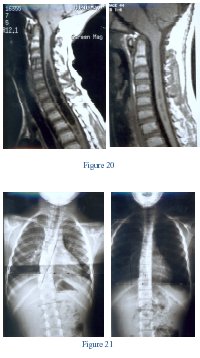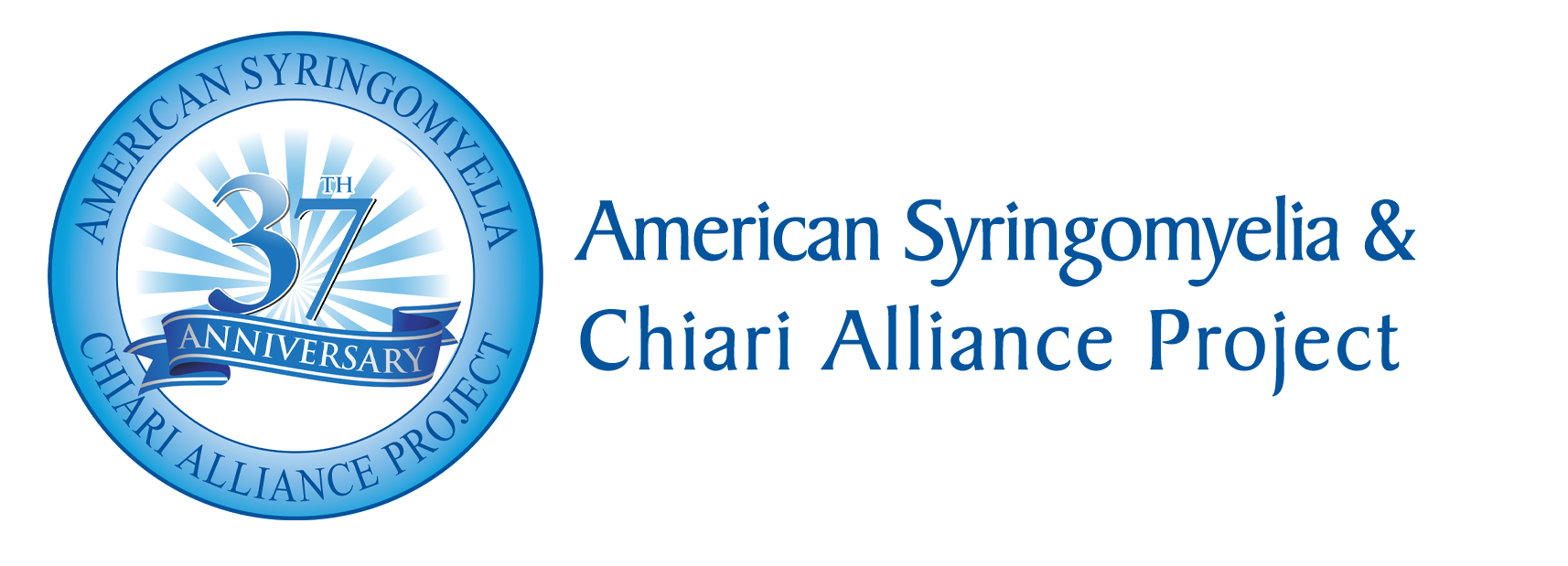
What we showed was that if they are operated on, early on, below the age of 12, that 80-90% of them by 12 (were talking about puberty) crossing over, growth spurt and changes in the bony configurations, that this can be handled earlier and get by without doing a scoliosis operation. Can we prove it? Theres a child that comes in with this big combination, [see Figure 17] weve got a portion hanging down here, the cavity in the spinal cord, this is accompanied by not a bad scoliosis but about a 20 angulation. This is the post-op MRI. [see Figure 18]

 Somebody that I look up to, Peter Carmel, described this very early, 1972. This is something I always look at, and if I see it there then I know Ive got a very big problem. Dr. Milhorat has described this too. But heres a big cavity in the spinal cord. Thats post op, [see Figure 20] things look good, thats the scoliosis [see Figure 21] before the procedure, thats within 6 months. I am very fortunate to be associated with a pediatric orthopedist, Dr. Weinstein, and hopefully we can get him to talk at the meeting next year. Dr. Weinstein sees about 1500 kids a year and performs something like 200 scoliosis operations. Dr. Weinstein sees the scoliosis and if theres anything abnormal they automatically all get MRIs and then I take care of them and then he follows through to make sure things have gotten well. He was co-author in some of this material and what youre seeing here, has changed orthopedic thinking. We put these kids in a brace to see if thats going to take care of it and over a period of 6 months we had an improvement. Not everybody does, but Ill figure sure about 86% of them will get better. Im talking about our whole series of scoliosis.
Somebody that I look up to, Peter Carmel, described this very early, 1972. This is something I always look at, and if I see it there then I know Ive got a very big problem. Dr. Milhorat has described this too. But heres a big cavity in the spinal cord. Thats post op, [see Figure 20] things look good, thats the scoliosis [see Figure 21] before the procedure, thats within 6 months. I am very fortunate to be associated with a pediatric orthopedist, Dr. Weinstein, and hopefully we can get him to talk at the meeting next year. Dr. Weinstein sees about 1500 kids a year and performs something like 200 scoliosis operations. Dr. Weinstein sees the scoliosis and if theres anything abnormal they automatically all get MRIs and then I take care of them and then he follows through to make sure things have gotten well. He was co-author in some of this material and what youre seeing here, has changed orthopedic thinking. We put these kids in a brace to see if thats going to take care of it and over a period of 6 months we had an improvement. Not everybody does, but Ill figure sure about 86% of them will get better. Im talking about our whole series of scoliosis.



